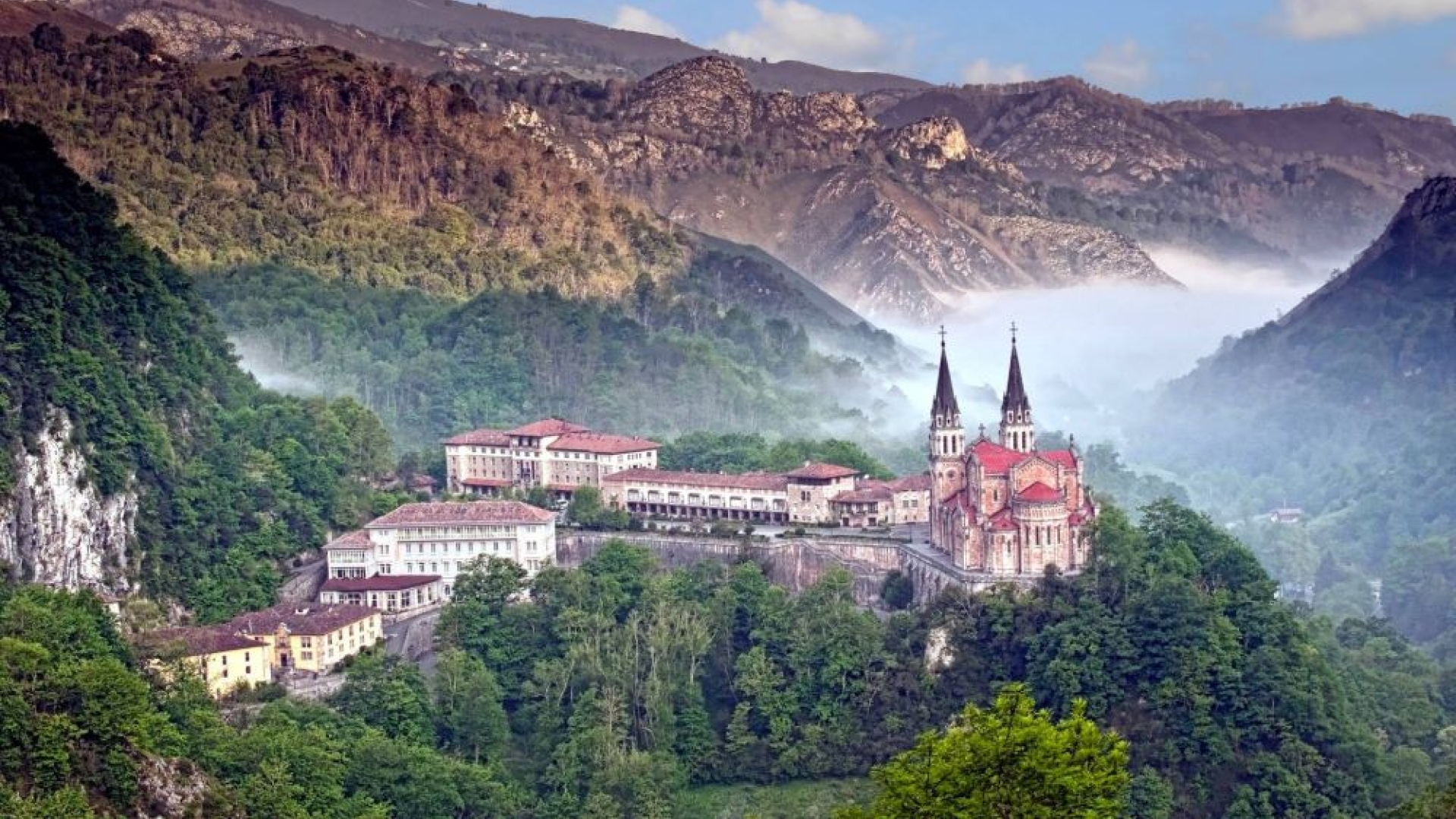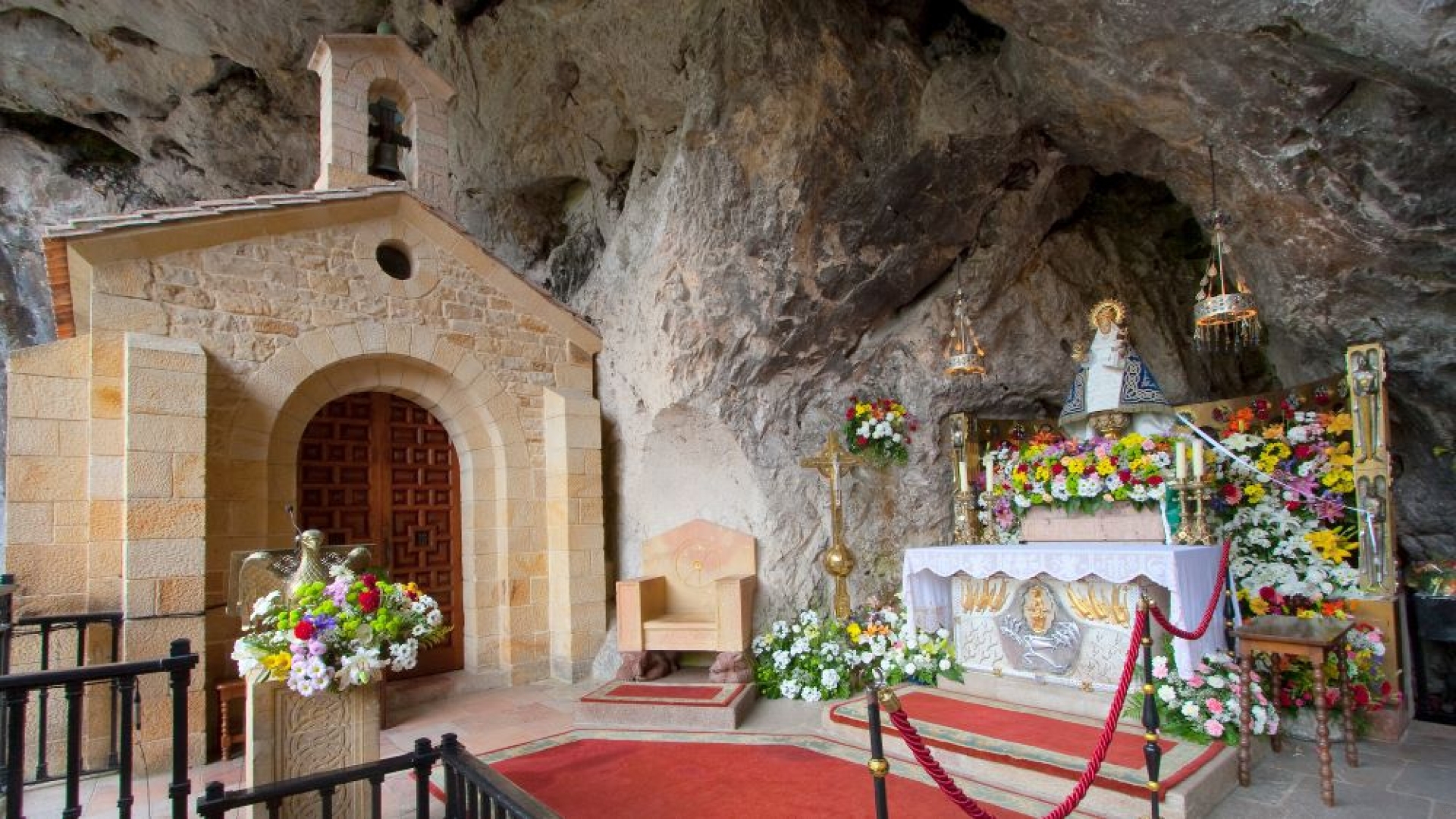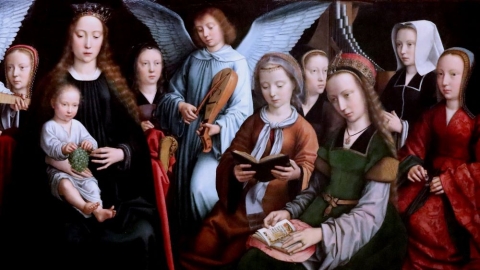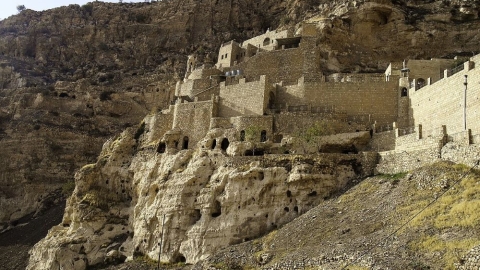Our Lady of Covadonga

Sanctuary of Our Lady of Covadonga
Without Covadonga, there would be no Christian Spain, and this country would now be only a Muslim nation, like Syria, Egypt or Algeria, where centuries-old and flourishing Christianity ended up drowning under the waves of Islam.
The story of Covadonga, or Cova Dominica, or even Cova de la Señora must be told.
Visigothic antecedents
In 711, near the Guadalete river – near Seville, in southern Spain – some 20,000 Arab and Berber warriors defeated an army of at least 50,000 men from one of the most powerful monarchies of the 8th century, under King Rodéric , who perished in battle.
Then came the conquest of the whole Iberian Peninsula. The invaders then launched into France. The Muslim tide was not stopped, as is well known, until near Poitiers, in 732, by Charles Martel, the grandfather of Charlemagne.
After the Battle of Guadalete, resistance to the occupiers was concentrated in northwestern Spain, particularly in Cantabria and Asturias.
The Battle of Covadonga
This resistance ended up irritating the Umayyads who decided on an expedition in 722. The Christian troops, commanded by King Pelayo of Cantabria, skillfully attracted these very superior enemies in number to the heart of the Picos de Europa, where they took over and completely defeated the invading troops.
After this battle, the Umayyads no longer questioned the independence of Asturias, which became the starting point of the Reconquista, of which the Battle of Covadonga marked the beginning.
During the battle, Pelayo had to take refuge in the cave of Covadonga, a kind of hermitage, in which there was a Virgin and Child to whom the king and his soldiers confided. On his death in 737, the king asked to be buried with his wife in the blessed sanctuary.
Devotion to the Virgin of Covadonga
The first cult of the sanctuary was entrusted to the Benedictines in the 8th century. Alfonso II of Asturias contributed to the construction of a primitive temple; St. Ferdinand III and Alphonse X the Wise increased its holdings. Among the Spanish monarchs, Isabella II was the first to visit it, accompanied by her confessor St. Anthony Marie Claret.
A staircase of “the promise” gives access to the holy Grotto. Pilgrims ascend it on their knees, thanking God or asking Him for favors. At the end is the stone inscription: “Here, in the name of the Mother of God, from between the rocks, on the heights, Spain arose.”
The basilica was inaugurated in 1901. The current image of the Virgin dates from the 15th century. The Popular Front government seized the image and took her out of Spain, but she was rescued in Paris in 1939 and brought back with full honors, arousing enormous enthusiasm everywhere she went: Irún, San Sébastian, Loyola, Mondragon, Vitoria, Valladolid, Leon, etc.
The museum-exhibition is full of offerings and votive offerings made to the Virgin of Covadonga, “la Santina” as she is popularly called, which are a living testimony to the devotion of her children and her maternal favors.
Covadonga is a revered place, to which no Spaniard can feel a stranger; the cradle of its nationality, the nucleus around which medieval and modern Spain has coalesced, the source of its re-Christianization.

The cave of Covadonga with the statue of the Virgin
(Sources: Wikipedia/La Virgen del Pilar y Santiago – FSSPX.News)
Illustration 1 : © photosvillages.canalblog.com
Illlustration 2 : Foto 14279364 © Francisco Javier Gil Oreja | Dreamstime.com





